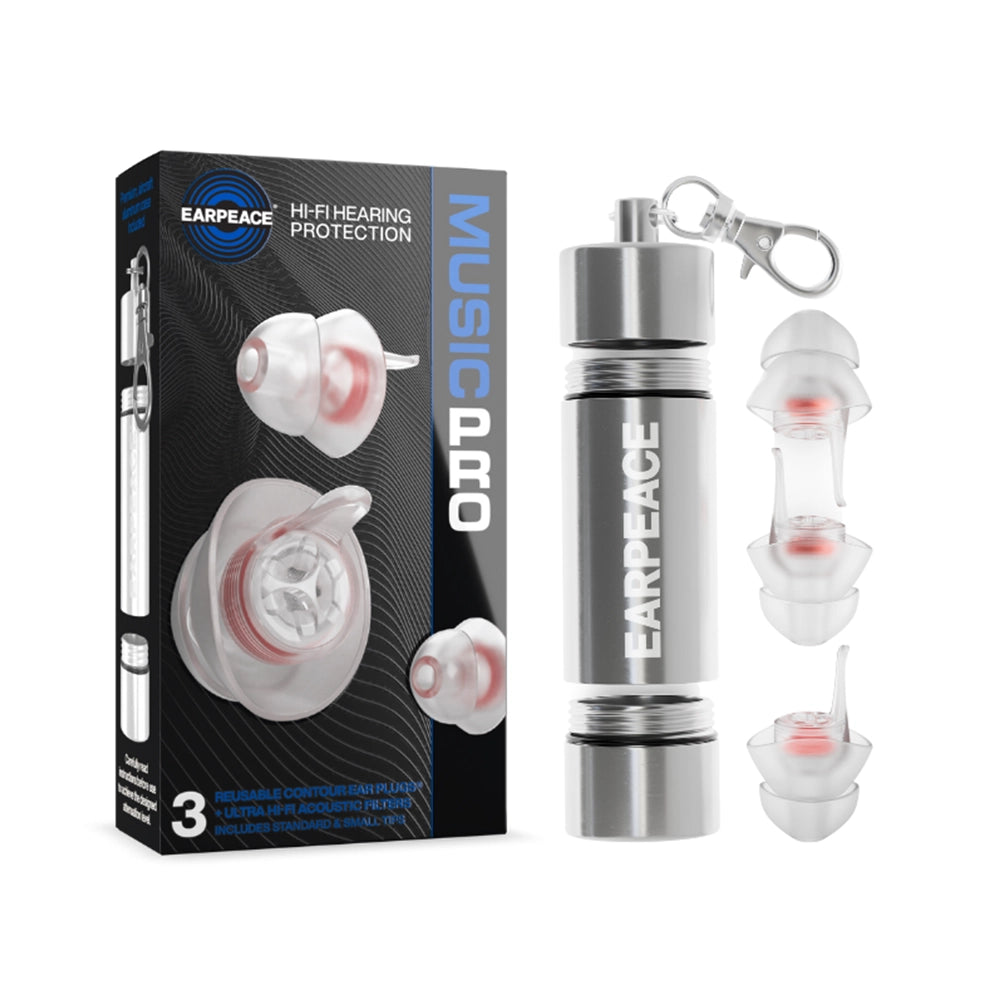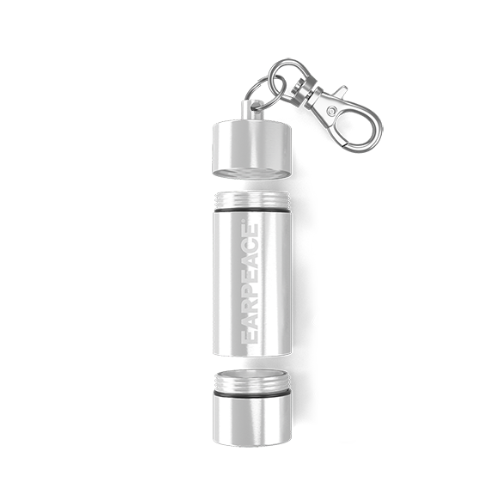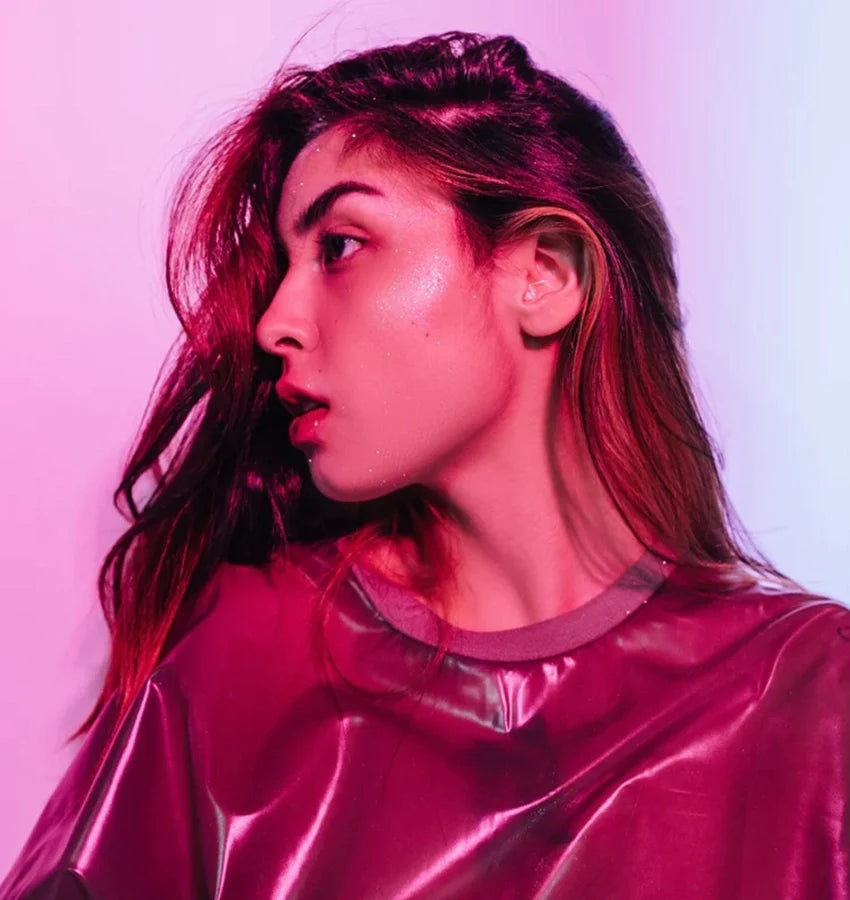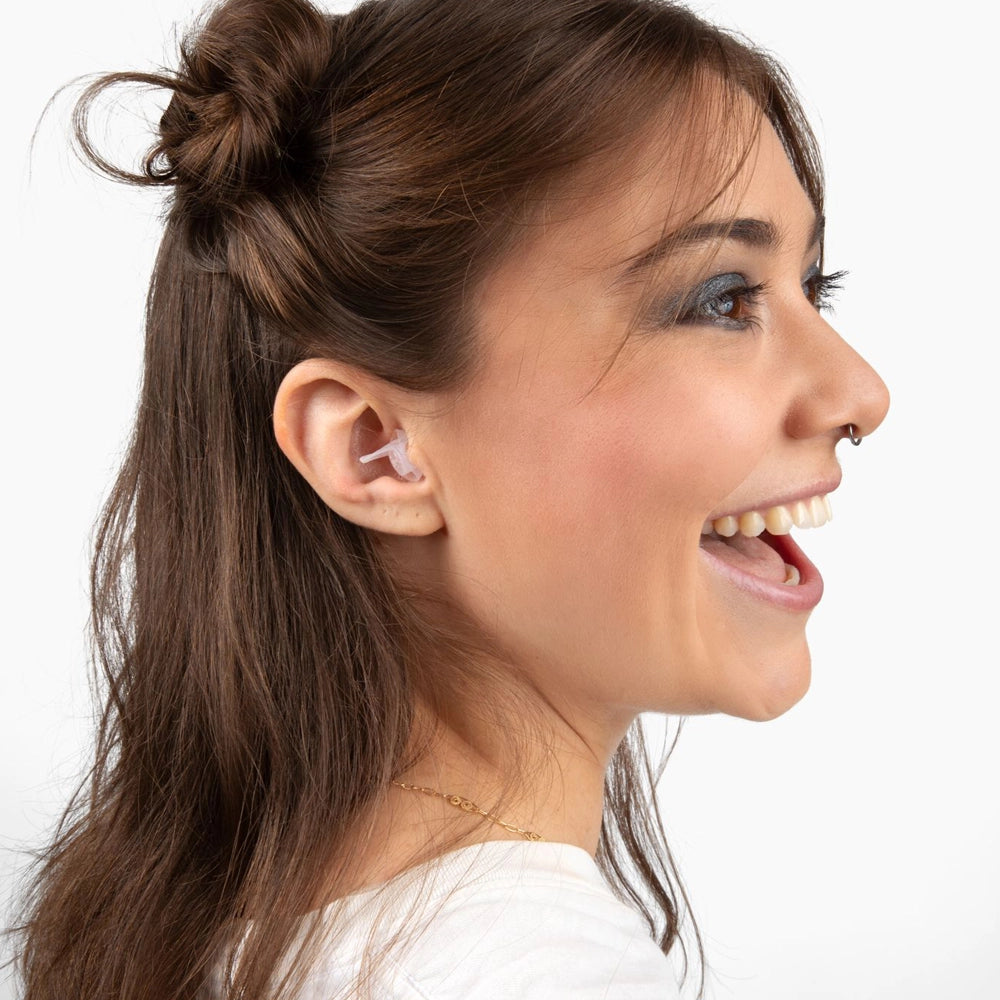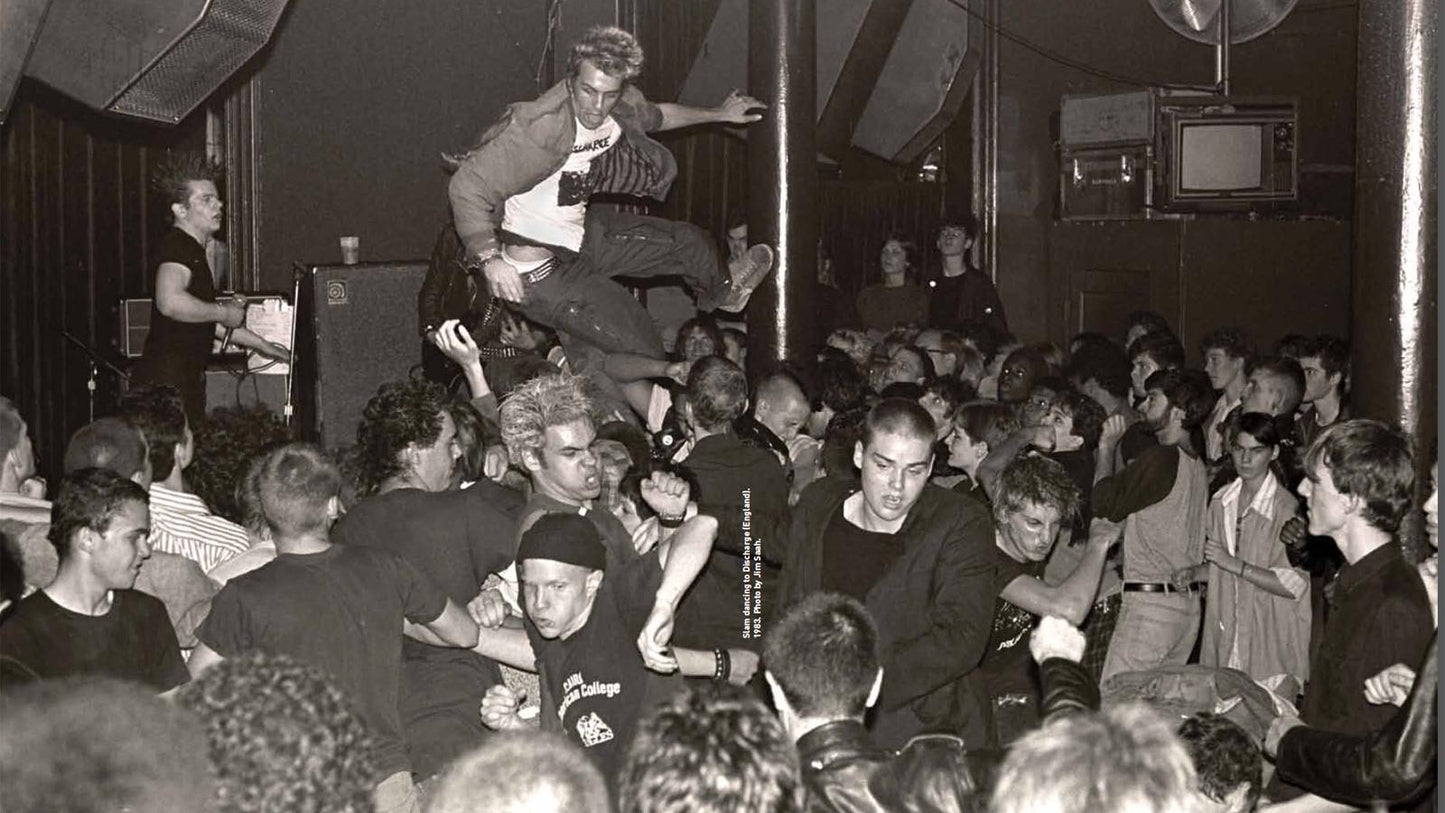
I’d forgotten how it felt to see live music. The pandemic, and poverty before that, had stopped all the music in my life except whatever came out of my little speaker and reverberated off concrete walls while I worked. But it was changing. All of it was changing. The leaves, the weather, the pandemic. At the start of this fall in North Carolina, everything was tentatively opening enough for live music to step back into my life.
Live Music After (ish) COVID
It was a folk festival, outside, on the streets with food trucks and local breweries and all manner of people eager and excited to be out of the house. I’d forgotten how it felt to be with people and live music, listening to a no-name band cut it’s teeth and figure out how to work with the energy of the crowd.
I’d actually started at EarPeace a few weeks before and this was my first chance to try our Music earplugs. I’m a firm believer in loud. Feel the bass drum in my body kind of loud. Do not care about tomorrow’s health problems kind of loud. I was afraid the earplugs would lower the volume to something sedate and blunted that took away the raw, full-body intensity of live music. But when I stopped under a leafy elm and slipped the earplugs into my ears, I was shocked to discover that lowering the noise wasn’t what they did—not really. The music was better. It sounded clearer and I could still feel the reverberations like I wanted. But the noise, the distortion, around the music was gone and I could hear my partner talk beside me without him needing to yell. Plus, they were so comfortable and discreet, it was like a light bulb went off, like “oh! I get it!” For a better experience, absolutely.
But as excited as I was to be there, vibing under a crescent Carolina moon and a great band from New Orleans, it only whetted my appetite to be back inside, at a small show, crammed alongside strangers and everything dark except the stage and the bar.
Independent Venues have struggled enormously on the road through COVID, and for most places in the country are only starting to look at the ability to be full capacity again. When writing this piece, many of the clubs I researched had changed hands during the pandemic—being sold from the long-time owners who made these places iconic to new people with futures still to be written. In some cases, clubs were closed and it wasn’t certain if they’d be open again. All this week leading up to Giving Tuesday on November 30th, we will be focusing on bringing attention to the support our local indie venues will continue to need from us, the fans, as we all make our way out of this. Here are some iconic indies who are at the top of my list to visit/revisit on the other side.

Iconic Indies
The 9:30 Club, one of the first indie venues we partnered with as they are our hometown stage, opened in 1980 in a basement location as a place for local alternative bands to play just as the alt scene began to creep in as a groundswell. It was known as the 9:30 club for both the location and the time they opened—“9:30, a time and a place.” And this iconic club has been both. The unknown acts cutting their teeth on 9:30 Club’s stage? Nirvana, Red Hot Chili Peppers, Public Enemy, Fugazi, Bad Brains, R.E.M. and more. In 1996 they changed locations, but the iconic experience continued and recently Dave Grohl announced plans to help build a replica of the original basement club next to the new one, for all it’s history to reside together.
Thirty miles and some change to the north of the 9:30 club is the club named after the owners cat. Ottobar is a small bar in downtown Baltimore that opened in 1997, but has hosted acts such as Bright Eyes, Death Cab for Cutie, Fear, Jimmy Eat World, Queens of the Stone Age, Spoon, and The White Stripes. It’s another venue that has changed locations but not lost any of it’s Baltimore music scene grit, grime or glory.
Saint Vitus, New York City, NY
Indie music venues and the history of New York City music scene has an overwhelming gluttony of incredible choices, but the dramatic metal fan in me is longing to head to Saint Vitus’s iconic stage. This bar opened in 2011 in Greenpoint, Brooklyn, turning a one-time plumbing school into a sleek, black bar perfect for hosting bands ranging from Metal, Punk and Hardcore to Goth, Post Punk and Industrial. quickly making a name for itself as an experience. Over the years it’s hosted incredible acts such as Chelsea Wolfe, Sannhet, Krallice, The Descendants, Neurosis, Megadeth, Anthrax, Carcass, Killing Joke, Refused, and Babes in Toyland. It has also developed into an art, dance, and yoga space beloved and supported by it’s community.
The Orange Peel, Asheville, NC
Tucked into the charming city of Asheville in the Blue Ridge Mountains of North Carolina is an iconic indie that began as a Skateland on the corner of Biltmore Ave. Through the 60’s it became the host to several R&B club’s (the last one being The Original Orange Peel) but ended up vacant for many years until Asheville began redeveloping it’s downtown. Nowadays, The Orange Peel Social Aid and Pleasure Club (their full name) has been lauded for it’s stage, hosting everyone from Bob Dylan to Ziggy Marley. It’s a vibrant piece of Asheville history bringing life and music to their mountain community.
Chillkoot Charlies, Anchorage, AK
“Koot’s” began in 1970’s oil boom Anchorage as a neighborhood bar with a live piano. They became an Alaskan institution by leaning all the way in on Alaska (which is what my Alaskan sister does as well). As the North Slope oil boomed, so did Koot’s, and the bar has hosted some iconic performers such as Metallica, Ted Nugent, Bad Company, Bryan Adams, Quiet Riot, Great White, Joe Satriani, The Steve Miller Band, Crosby Stills and Nash, Blues Traveler, White Zombie, Bon Jovi, Lynyrd Skynyrd, Ratt, Journey, and Ozzy Osbourne. With sawdust floors and Alaska and music memorabilia to the rafters, this iconic employee-owned indie is always worth a visit if you find yourself “up North.”
What’s special about 924 Gilman is that it has always intended to provide a safe, all-ages club where punk and hardcore fans could collect and focus on creativity. Since 1986, 924 Gilman has done exactly that. It was the stage where Green Day cut their teeth and remains to this day, a non-profit, all ages, collectively organized music, art and community club. Which is punk as fuck.
Formerly known as “Jewels Catch One”, this venue was the longest running Black gay dance club in L.A. until it was sold in 2015 to it’s current owners. It’s history in the LA indie scene remains iconic, hosting artists such as Sylvester, Whitney Houston, Luther Vandross, Janet Jackson, Donna Summer, Whoopi Goldberg, Rick James, and Madonna. The original owner and namesake, Jewel Thais-Williams bought the club when it was not permitted for a Black woman to keep bar. But she made it work and in doing so, created a piece of LA history.
Pappy & Harriet’s, Pioneertown, CA
Near Joshua Tree Park, this music venue began as a set saloon for westerns filming in Pioneertown throughout the 1950’s. After Hollywood left, in 1972 the set saloon became an “outlaw biker burrito bar” (so many questions!). It was sold within the same family over the years, morphing into something both family and wanderer friendly, mesquite barbecue, dancing and an iconic stage hosting everyone from Paul McCartney to Lizzo.
Supporting Independent Venues
The experience of music at a small, independent venue is unmatched—and it’s part of the reason big bands still love to play small shows. There’s an intimacy in those spaces that differs from the vastness of an auditorium or the energy of a festival. More than just great music, these bars and clubs are part of the local history, the personal stories of bands and fans, and offer places of safety and creativity for the communities they grow from. Now more than ever, your local indie depends on you, their community, to keep those spaces open to all who need them.

